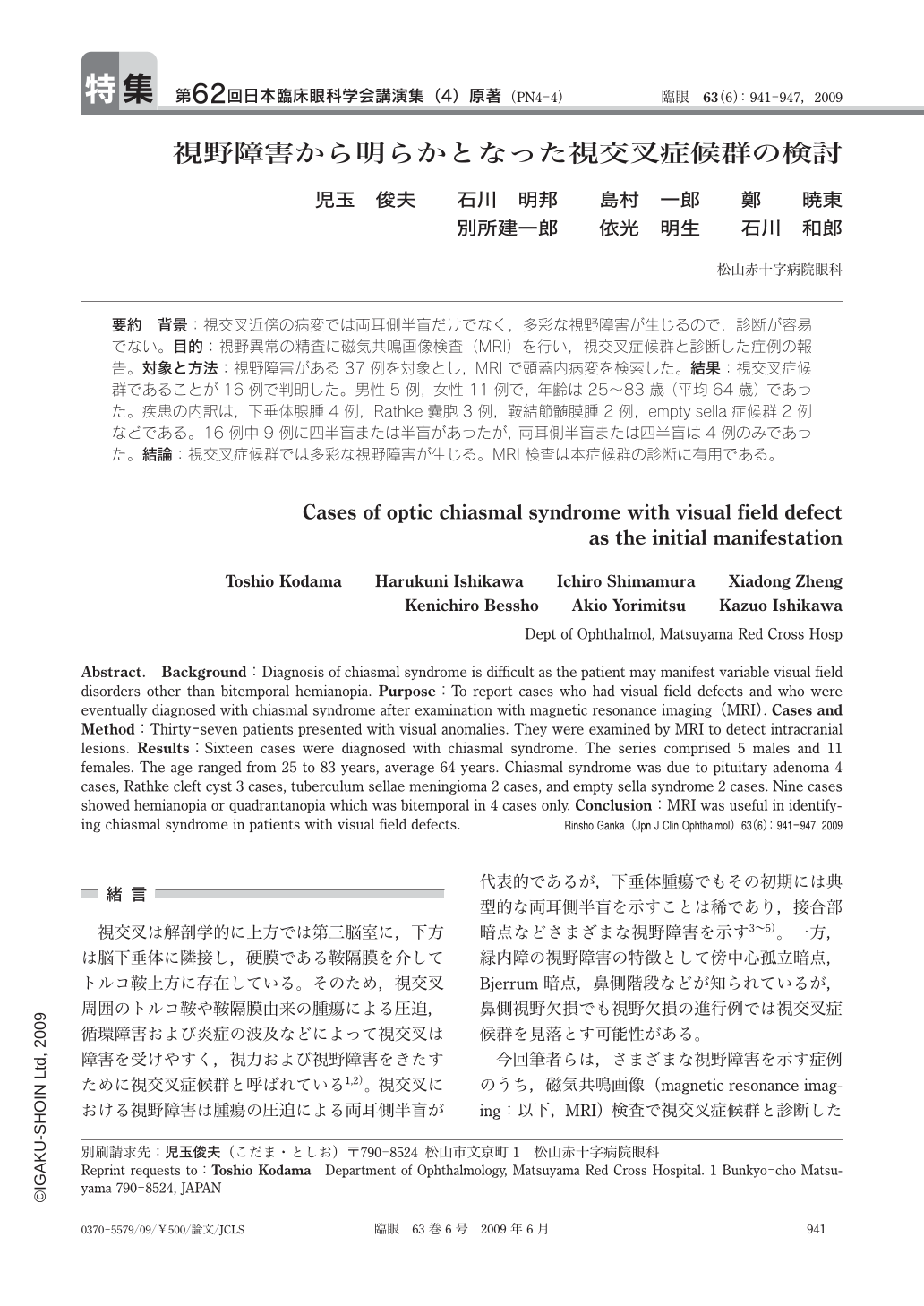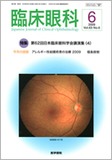Japanese
English
- 有料閲覧
- Abstract 文献概要
- 1ページ目 Look Inside
- 参考文献 Reference
要約 背景:視交叉近傍の病変では両耳側半盲だけでなく,多彩な視野障害が生じるので,診断が容易でない。目的:視野異常の精査に磁気共鳴画像検査(MRI)を行い,視交叉症候群と診断した症例の報告。対象と方法:視野障害がある37例を対象とし,MRIで頭蓋内病変を検索した。結果:視交叉症候群であることが16例で判明した。男性5例,女性11例で,年齢は25~83歳(平均64歳)であった。疾患の内訳は,下垂体腺腫4例,Rathke囊胞3例,鞍結節髄膜腫2例,empty sella症候群2例などである。16例中9例に四半盲または半盲があったが,両耳側半盲または四半盲は4例のみであった。結論:視交叉症候群では多彩な視野障害が生じる。MRI検査は本症候群の診断に有用である。
Abstract. Background:Diagnosis of chiasmal syndrome is difficult as the patient may manifest variable visual field disorders other than bitemporal hemianopia. Purpose:To report cases who had visual field defects and who were eventually diagnosed with chiasmal syndrome after examination with magnetic resonance imaging(MRI). Cases and Method:Thirty-seven patients presented with visual anomalies. They were examined by MRI to detect intracranial lesions. Results:Sixteen cases were diagnosed with chiasmal syndrome. The series comprised 5 males and 11 females. The age ranged from 25 to 83 years,average 64 years. Chiasmal syndrome was due to pituitary adenoma 4 cases,Rathke cleft cyst 3 cases,tuberculum sellae meningioma 2 cases,and empty sella syndrome 2 cases. Nine cases showed hemianopia or quadrantanopia which was bitemporal in 4 cases only. Conclusion:MRI was useful in identifying chiasmal syndrome in patients with visual field defects.

Copyright © 2009, Igaku-Shoin Ltd. All rights reserved.


